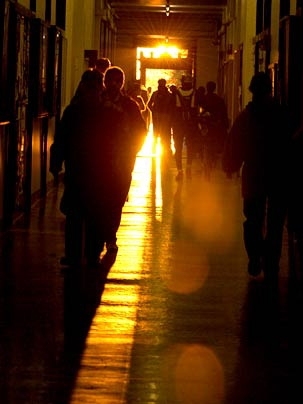Though it may not garner the same level of tourism, MIT's own version of Stonehenge still manages to draw a crowd.
The view from the third floor of Building 8 is said to be best when, for a moment each year, the Infinite Corridor captures the light from the setting sun to create a phenomenon called "MIThenge." Named after prehistoric Stonehenge in England, the effect happens on just a few afternoons each year.
Barring a cloudy day, the effect will be visible this week, on Jan. 27 at approximately 4:50 p.m. and again the next day at 4:49 p.m. It will be visible one final time this winter, on Jan. 29 at 4:48 p.m. The next appearance will be in November.
MIThenge occurs when the path of the sun crosses the axis of the Infinite Corridor in late January and mid-November every year. As the sun aligns, the marble floor is illuminated and the reflection can be seen far down the hall. "The orange light reflected off the ceiling is often striking," according to the website dedicated to the marvel.
For the past 30 years, people have gathered to witness the event, but those who do are cautioned not to stare directly at the sun. Additional spots for viewing are just beneath the stairwell in Building 8 at the end of the Infinite Corridor and looking out the windows of Building 18 and in through the window of Building 8 at the end of the corridor.
A version of this article appeared in MIT Tech Talk on January 26, 2005 (download PDF).






